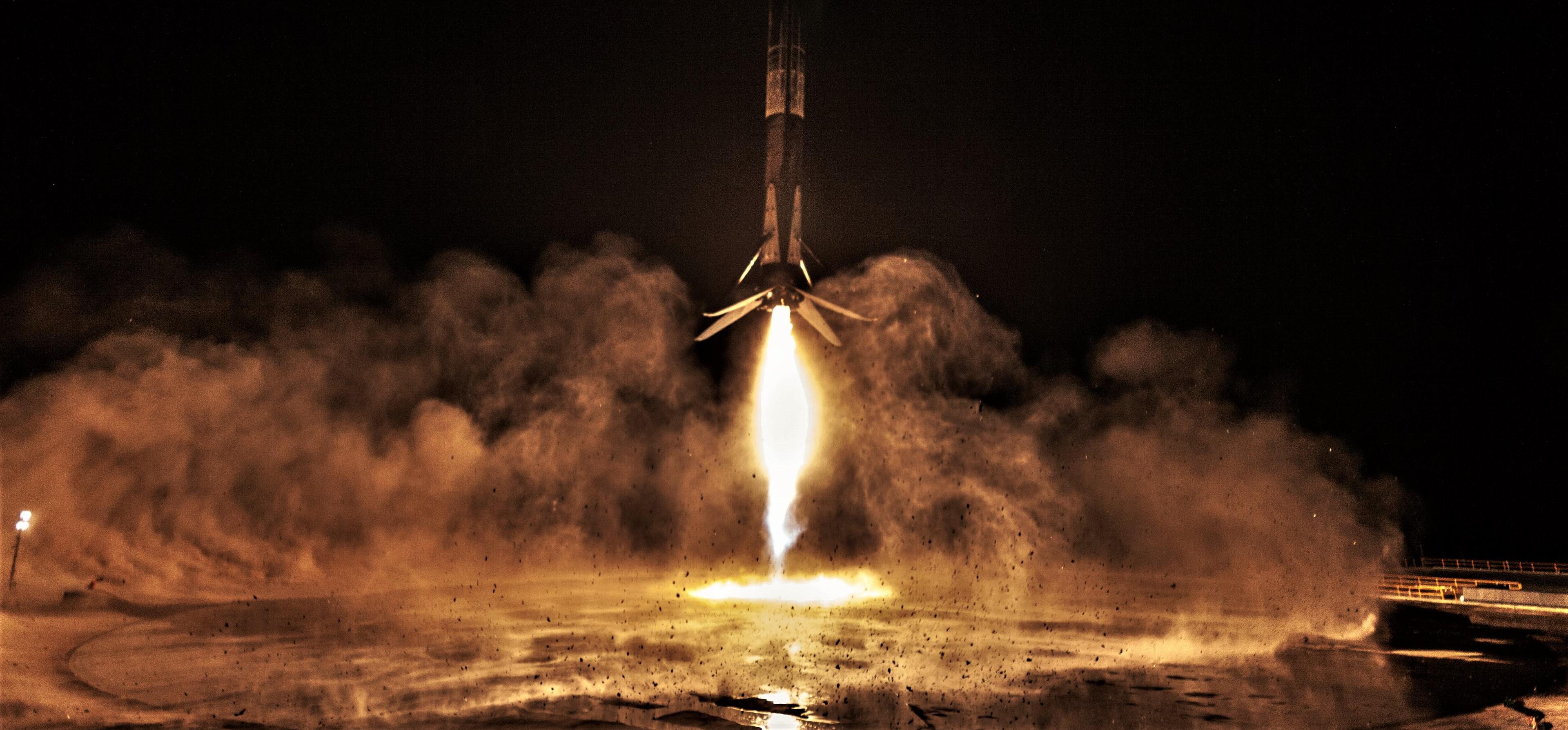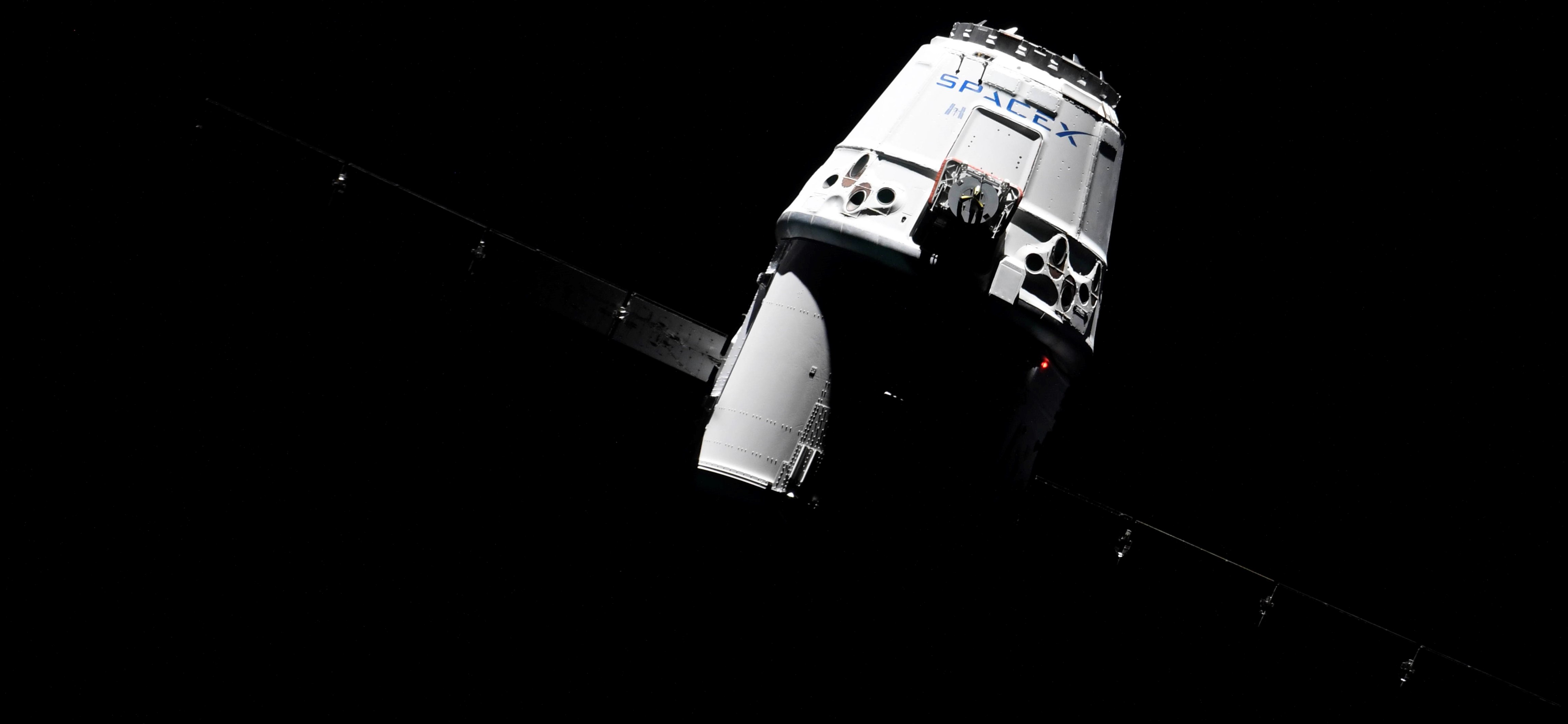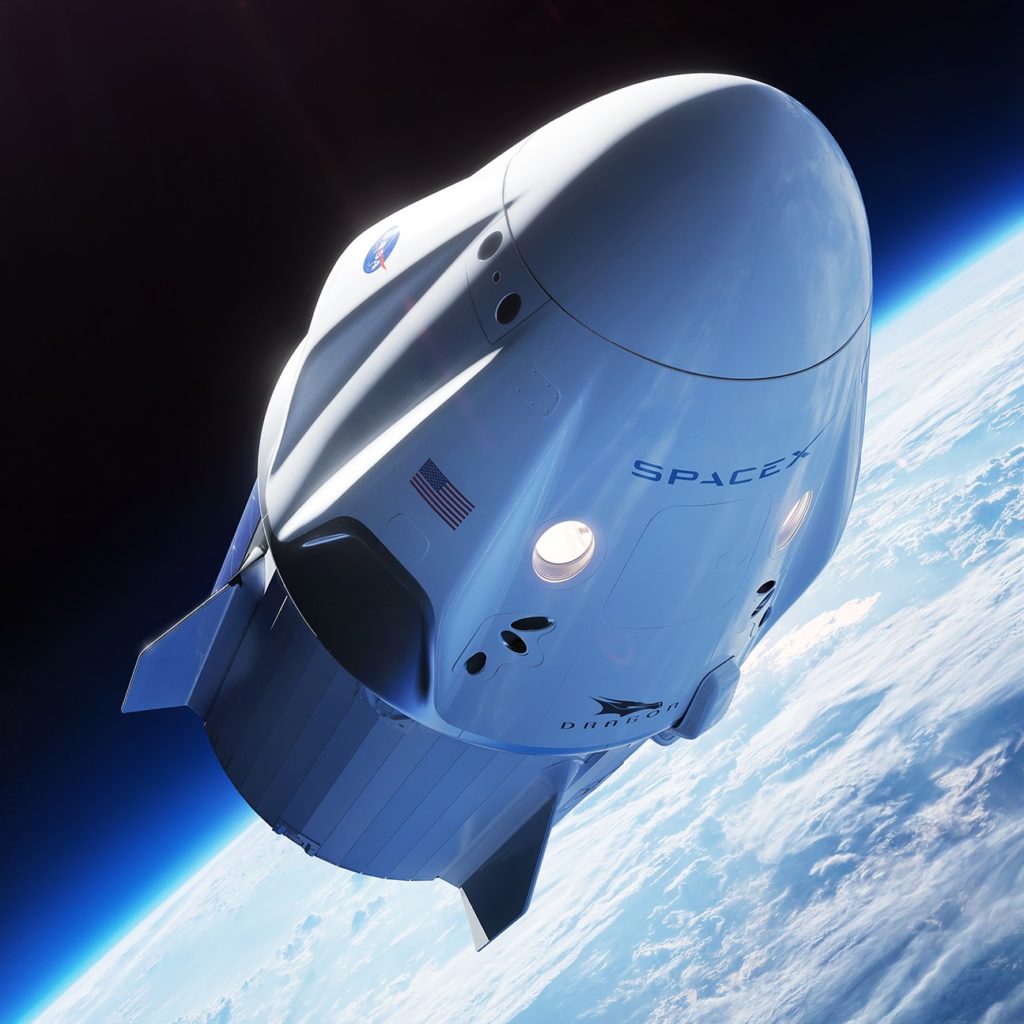

News
SpaceX Falcon 9 rocket spied at Pad 39A as December launch quartet aligns
Photographer Tom McCool lucked upon an open hangar door at Pad 39A on November 27, catching a fresh Falcon 9 Block 5 booster in the late stages of pre-launch integration.
Likely to launch one of two particularly important payloads sometime in the next 4-8 weeks, this booster spotting aligns with what is anticipated to be a fairly busy December for SpaceX, marked by four possible launches and preparations for the imminent inaugural test flight of Crew Dragon.
#SpaceX had the door open to the HIF at 39A this morning showing us a #Falcon9 pic.twitter.com/3aECxYP4Y7
— Tom (@Cygnusx112) November 27, 2018
At the moment, SpaceX is the juggling shipment, integration, and preflight checkouts of at least three shiny new Falcon 9 Block 5 rockets ahead of critical US Air Force and NASA launches in December and January. In order of anticipated launch date, those boosters are B1050, B1054, and B1051 for CRS-16 (Cargo Dragon), an upgraded GPS III satellite, and DM-1 (Crew Dragon), respectively.
CRS-16
On the East Coast, SpaceX’s next launch is the 16th operational resupply mission for Cargo Dragon, scheduled to deliver several tons of critical supplies to the International Space Station no earlier than (NET) December 4th. Set to launch from SpaceX’s Cape Canaveral Air Force Station (CCAFS) Launch Complex 40 (LC-40), the new Block 5 booster B1050 is already integrated and at the ready inside the company’s LC-40 hangar, awaiting the arrival and attachment of a flight-proven Cargo Dragon.

While it’s unknown which Dragon capsule that will be, SpaceX has anywhere from 4-8 recovered spacecraft to choose from, although expendable trunks (a detachable aft section adorned with solar arrays and storage space) must still be built for each future resupply mission. According to CEO Elon Musk and other SpaceX executives, Cargo Dragon was designed from the start to be capable of at least three orbital missions with refurbishment, and it’s possible that CRS-16 could be the third launch for one such capsule.
After sending Cargo Dragon and the upper stage on their way, Falcon 9 B1050 will likely perform the first Block 5 Return To Launch Site (RTLS) recovery, performing a 180 degree flip and burning back towards the Florida coast to land just a few miles away from the launch site.
- A flight-proven Cargo Dragon prepares to launch in support of CRS-14. (Tom Cross)
- CRS-14’s flight-proven Cargo Dragon captured on orbit in April 2018 by astronaut Oleg Artemyev. (NASA/Oleg Artemyev)
GPS III-01 (the first of many)
Of the five launch contracts thus competed for the first ten GPS III satellite launches, SpaceX has won all five, while ULA’s Delta IV was awarded a launch contract for one of those satellites, leaving four more up for grabs in the next several years. The first ‘Space Vehicle’, GPS III serial number 01 (GPS III-01), is now ready for launch, pending the completion of certain USAF reviews of SpaceX’s recently-debuted Block 5 Falcon 9 upgrade.
Now targeting NET December 18, perhaps the most curious aspect of Falcon 9’s first GPS launch is the glaring reality that most signs currently point toward an intentionally expendable configuration of the new Falcon 9 Block 5 booster. Given that SpaceX has made it abundantly clear that Block 5 boosters at least aspire to be able to perform 10 launches with little to no refurbishment, expending a fresh booster without even a single reuse would carry a potentially immense opportunity cost.
Booster B1054 is set to be invovled with this mission. It's currently classed as "Expendable" meaning no recovery on the Eastern Range.
This is the passenger: pic.twitter.com/ohJFIz197P
— NSF – NASASpaceflight.com (@NASASpaceflight) November 19, 2018
By all reasonable estimation, Falcon 9 Block 5 should be able to place the ~3900 kg (8600 lb) GPS III satellite into a medium Earth orbit with plenty of margin left over for a drone ship recovery in the Atlantic. Likely to launch aboard Falcon 9 B1054, the only possible explanation for an expendable mission would be a request (or demand) from SpaceX’s customer, the USAF.
Crew Dragon’s orbital debut (DM-1)
Finally, SpaceX and NASA have – perhaps for the first time in the history of the Commercial Crew Program (CCP) – set an actual date for the first orbital launch of a spacecraft developed under the program’s purview, in this case SpaceX’s Crew Dragon atop a Falcon 9 Block 5 rocket. NET January 7 2019, that date is certainly tenuous, but it effectively indicates that SpaceX is certain the hardware, software, and general operations side of things is all good to go. SpaceX is now more or less waiting on NASA’s dreadfully slow bureaucracy to perform the far more mundane duties of completing paperwork, coordinating ISS schedules to fit Crew Dragon in, and other miscellaneous tasks.
- In this illustration, a SpaceX Crew Dragon spacecraft is shown in low-Earth orbit. (SpaceX)
- DM-2 astronauts Bob Behnken and Doug Hurley train for their first flight in Crew Dragon. (NASA)
- B1051 performed its last Texas static fire last month and has since shipped to Florida. (SpaceX)
Time will tell, but COO and President Gwynne Shotwell stated in October 2018 that she fully expected Falcon 9 and the first orbit-ready Crew Dragon to be vertical at Pad 39A before the month of December is out, basically ready to launch as soon as NASA and ISS scheduling are ready to allow it. It’s nearly impossible to know for sure, but the rocket spotted on Tuesday inside Pad 39A’s hangar could very well be Falcon 9 B1051 and a crew-ready upper stage preparing for Crew Dragon’s first autonomous test flight, or it could be B1054 (unconfirmed) in the late stages of preparation for SpaceX’s imminent GPS III launch.
All will be made clear in the coming weeks. Meanwhile, SpaceX’s next launch – SSO-A on the West Coast – has slipped into the first few days of December thanks to some unusually harsh weather conditions above the launch pad.
News
Tesla launches in India with Model Y, showing pricing will be biggest challenge
Tesla finally got its Model Y launched in India, but it will surely come at a price for consumers.

Tesla has officially launched in India following years of delays, as it brought its Model Y to the market for the first time on Tuesday.
However, the launch showed that pricing is going to be its biggest challenge. The all-electric Model Y is priced significantly higher than in other major markets in which Tesla operates.
On Tuesday, Tesla’s Model Y went up for sale for 59,89,000 rupees for the Rear-Wheel Drive configuration, while the Long Range Rear-Wheel Drive was priced at 67,89,000.
This equates to $69,686 for the RWD and $78,994 for the Long Range RWD, a substantial markup compared to what these cars sell for in the United States.
🚨 Here’s the difference in price for the Tesla Model Y in the U.S. compared to India.
🚨 59,89,000 is $69,686
🚨 67,89,000 is $78,994 pic.twitter.com/7EUzyWLcED— TESLARATI (@Teslarati) July 15, 2025
Deliveries are currently scheduled for the third quarter, and it will be interesting to see how many units they can sell in the market at this price point.
The price includes tariffs and additional fees that are applied by the Indian government, which has aimed to work with foreign automakers to come to terms on lower duties that increase vehicle cost.
Tesla Model Y seen testing under wraps in India ahead of launch
There is a chance that these duties will be removed, which would create a more stable and affordable pricing model for Tesla in the future. President Trump and Indian Prime Minister Narendra Modi continue to iron out those details.
Maharashtra Chief Minister Devendra Fadnavis said to reporters outside the company’s new outlet in the region (via Reuters):
“In the future, we wish to see R&D and manufacturing done in India, and I am sure at an appropriate stage, Tesla will think about it.”
It appears to be eerily similar to the same “game of chicken” Tesla played with Indian government officials for the past few years. Tesla has always wanted to enter India, but was unable to do so due to these import duties.
India wanted Tesla to commit to building a Gigafactory in the country, but Tesla wanted to test demand first.
It seems this could be that demand test, and the duties are going to have a significant impact on what demand will actually be.
Elon Musk
Tesla ups Robotaxi fare price to another comical figure with service area expansion
Tesla upped its fare price for a Robotaxi ride from $4.20 to, you guessed it, $6.90.

Tesla has upped its fare price for the Robotaxi platform in Austin for the first time since its launch on June 22. The increase came on the same day that Tesla expanded its Service Area for the Robotaxi ride-hailing service, offering rides to a broader portion of the city.
The price is up from $4.20, a figure that many Tesla fans will find amusing, considering CEO Elon Musk has used that number, as well as ’69,’ as a light-hearted attempt at comedy over the past several years.
Musk confirmed yesterday that Tesla would up the price per ride from that $4.20 point to $6.90. Are we really surprised that is what the company decided on, as the expansion of the Service Area also took effect on Monday?
But the price is now a princely $6.90, as foretold in the prophecy 😂
— Elon Musk (@elonmusk) July 14, 2025
The Service Area expansion was also somewhat of a joke too, especially considering the shape of the new region where the driverless service can travel.
I wrote yesterday about how it might be funny, but in reality, it is more of a message to competitors that Tesla can expand in Austin wherever it wants at any time.
Tesla’s Robotaxi expansion wasn’t a joke, it was a warning to competitors
It was only a matter of time before the Robotaxi platform would subject riders to a higher, flat fee for a ride. This is primarily due to two reasons: the size of the access program is increasing, and, more importantly, the service area is expanding in size.
Tesla has already surpassed Waymo in Austin in terms of its service area, which is roughly five square miles larger. Waymo launched driverless rides to the public back in March, while Tesla’s just became available to a small group in June. Tesla has already expanded it, allowing new members to hail a ride from a driverless Model Y nearly every day.
The Robotaxi app is also becoming more robust as Tesla is adding new features with updates. It has already been updated on two occasions, with the most recent improvements being rolled out yesterday.
Tesla updates Robotaxi app with several big changes, including wider service area
News
Tesla Model Y and Model 3 dominate U.S. EV sales despite headwinds
Tesla’s two mainstream vehicles accounted for more than 40% of all EVs sold in the United States in Q2 2025.

Tesla’s Model Y and Model 3 remained the top-selling electric vehicles in the U.S. during Q2 2025, even as the broader EV market dipped 6.3% year-over-year.
The Model Y logged 86,120 units sold, followed by the Model 3 at 48,803. This means that Tesla’s two mainstream vehicles accounted for 43% of all EVs sold in the United States during the second quarter, as per data from Cox Automotive.
Tesla leads amid tax credit uncertainty and a tough first half
Tesla’s performance in Q2 is notable given a series of hurdles earlier in the year. The company temporarily paused Model Y deliveries in Q1 as it transitioned to the production of the new Model Y, and its retail presence was hit by protests and vandalism tied to political backlash against CEO Elon Musk. The fallout carried into Q2, yet Tesla’s two mass-market vehicles still outsold the next eight EVs combined.
Q2 marked just the third-ever YoY decline in quarterly EV sales, totaling 310,839 units. Electric vehicle sales, however, were still up 4.9% from Q1 and reached a record 607,089 units in the first half of 2025. Analysts also expect a surge in Q3 as buyers rush to qualify for federal EV tax credits before they expire on October 1, Cox Automotive noted in a post.
Legacy rivals gain ground, but Tesla holds its commanding lead
General Motors more than doubled its EV volume in the first half of 2025, selling over 78,000 units and boosting its EV market share to 12.9%. Chevrolet became the second-best-selling EV brand, pushing GM past Ford and Hyundai. Tesla, however, still retained a commanding 44.7% electric vehicle market share despite a 12% drop in in Q2 revenue, following a decline of almost 9% in Q1.
Incentives reached record highs in Q2, averaging 14.8% of transaction prices, roughly $8,500 per vehicle. As government support winds down, the used EV market is also gaining momentum, with over 100,000 used EVs sold in Q2.
Q2 2025 Kelley Blue Book EV Sales Report by Simon Alvarez on Scribd
-

 Elon Musk2 weeks ago
Elon Musk2 weeks agoTesla investors will be shocked by Jim Cramer’s latest assessment
-

 News3 days ago
News3 days agoTesla debuts hands-free Grok AI with update 2025.26: What you need to know
-

 Elon Musk1 week ago
Elon Musk1 week agoElon Musk confirms Grok 4 launch on July 9 with livestream event
-

 Elon Musk5 days ago
Elon Musk5 days agoxAI launches Grok 4 with new $300/month SuperGrok Heavy subscription
-

 News2 weeks ago
News2 weeks agoTesla Model 3 ranks as the safest new car in Europe for 2025, per Euro NCAP tests
-

 Elon Musk2 weeks ago
Elon Musk2 weeks agoxAI’s Memphis data center receives air permit despite community criticism
-

 News5 days ago
News5 days agoTesla begins Robotaxi certification push in Arizona: report
-

 Elon Musk2 weeks ago
Elon Musk2 weeks agoTesla scrambles after Musk sidekick exit, CEO takes over sales






















